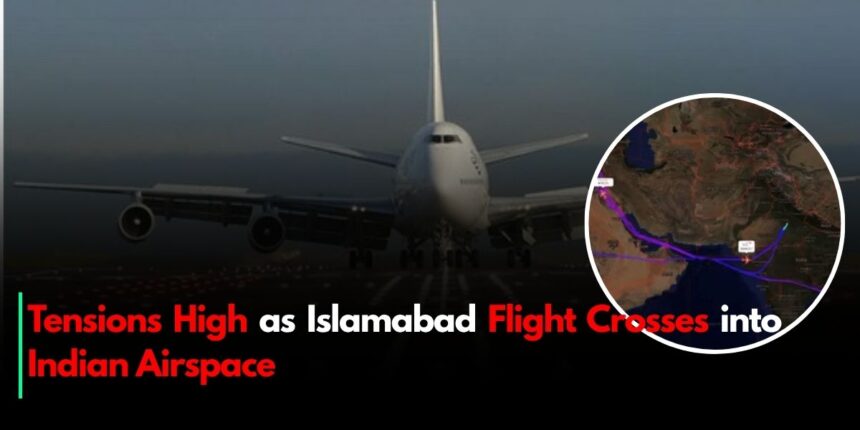An event that generated considerable media interest in the area is when a commercial flight departing from Islamabad inadvertently entered Indian airspace, demonstrating just how fragile relations in the area can be between the parties. Both parties agree it was an accidental error, but serves as another example of how flights can become sources of friction when relations are worsening between states.
WHAT HAPPENED
On the Monday, a Pakistan International Airlines (PIA), flight PK-722 operating to Dubai, during the travel to that destination deviated from its approved air corridor, and for just a few minutes while making its way to Dubai entered Indian airspace near Jammu. India tracked the flight after the warning sounded on radar, and tracked the aircraft until it re-entered the air corridor into Pakistan’s airspace.
The civil aviation authorities determined by the end of the day that the deviation did not cause any harm or escalation. A top official from Pakistan’s Civil Aviation Authority (CAA) said, “It was an accident.” They went on to allege that Pakistani radar controllers stepped in and quickly fixed the aircraft path.
A Place with Closed Skies and Higher Prices
The event takes place in the middle of long-standing restrictions. Since April 24, Pakistan has prevented Indian flights from using its airspace, and Indian carriers have had the same limitations on the Pakistani side. But other international and Pakistani airlines are still flying, even though air routes are being examined more attentively now.
It has already cost a lot to look that closely. The CEO of Air India declared in public that these changes had raised flying hours and made fuel costs much higher. This is only one way that these developments have influenced all of regional aviation.
Tensions on the ground and in the sky
These airspace variations are likely to make people worried, even though aviation officials still control the skies. This is because the political environment is severe. Flight paths are strictly controlled by NOTAMs and international air route agreements. For example, “Operation Sindoor” in May temporarily banned all of Pakistan’s airspace, even to its own carriers.
+10 for airwaysmag.com, +10 for en.wikipedia.org, and +10 for youtube.com.
Now, Indian and Pakistani air traffic control systems watch each other’s planes more closely all the time. Even slight mistakes lead to quick action: Indian controllers confirmed the plane’s location and alerted Islamabad, while Pakistani controllers set up a quick response.
What the Civil Aviation Authorities Are Up To The Pakistan CAA has vowed to investigate into the case completely, going into radar files, flight recorder data, and communications between controllers. Pakistan’s aviation source indicated that these kinds of processes have begun, but they rarely result in punishment unless the deviation was shown to be substantial or wilful.
The International Civil Aviation Organisation (ICAO) stipulates that any changes like these must be disclosed within 24 hours. Following established international practice, the aviation authorities are expected to submit each other official reports regarding the event.
Why It Matters
This flight drift wasn’t very big or long, but it highlights how vulnerable the environment is as a whole:
Symbolic sensitivity: When there are bans on open skies and regional tensions, even unintentional intrusions are rendered worse by the media and public opinion.
Air travel economics: Large regional carriers’ expenses, schedules, and earnings are affected by flights that are rerouted.
Civil diplomacy: These air travel routes can be used for diplomatic purposes on the side, allowing people to work together peacefully or start a new battle.
Officials explain that this was just a small navigation error that was addressed right away. Flight operations will still go on changed routes, but they will be watched more closely. Commercial traffic won’t be hindered as long as the airspace restrictions only apply to Indian-registered carriers.
Still, experts suggest that individuals should be vigilant. If tensions increase again, even little adjustments in the future could cause diplomatic protests, regulatory reviews, or even flight bans. They argue that civil aviation doesn’t simply work in the air; it also works in difficult diplomatic weather patterns.
In the end, a jet that goes the wrong way is no big deal – but in the theatre of India and Pakistan, a few minutes sharing the same airspace can mean a lot more. There’s figurative baggage after today’s outcome, but we do have to realize that we will need to take the risk together and do an exchange – because we must keep the skies secure and our foreign eyes looking south is stable.










